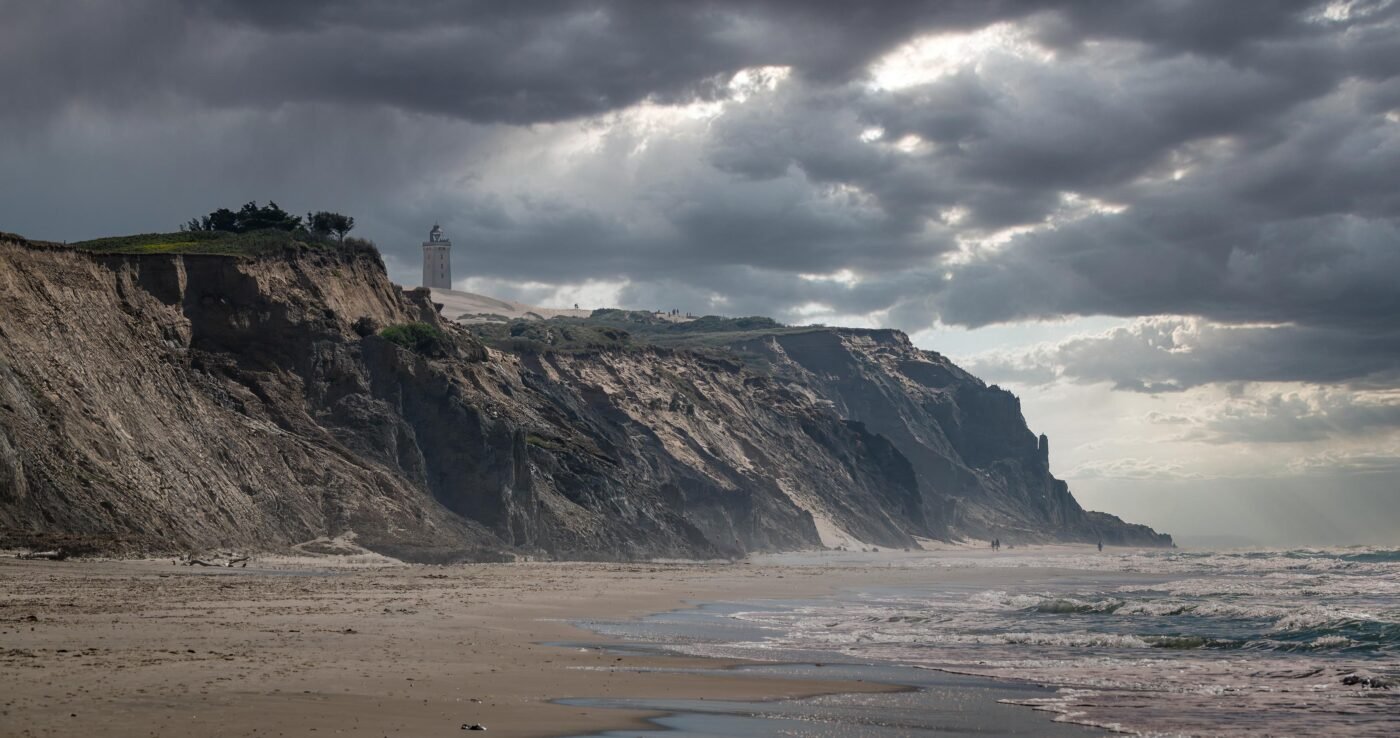Rubjerg Knude Lighthouse: Photography on the Danish Coast
On the rugged west coast of Jutland, high above the sea and dunes, stands the iconic Rubjerg Knude Lighthouse. It is one of the most photographed places in Denmark – and for good reason. The lighthouse rises above the sand and waves and seems to constantly battle the elements.
When I visited recently, the forecast predicted two days of strong winds. For me as a photographer, the perfect moment: the power of the wind combined with the coast creates spectacular images. Blowing sand and the wild sea gave the landscape a unique atmosphere I had not seen anywhere else.
In this article I’ll share my experience at the Rubjerg Knude Lighthouse and give tips for anyone who wants to visit or photograph this special place.
Table of Contents
The remarkable history of Rubjerg Knude
The Rubjerg Knude Lighthouse was built in 1899 on a high cliff on the coast of North Jutland. Originally the tower stood safely above the sea, but over time the forces of wind and sand reshaped the landscape. Sand dunes slowly crept towards the tower and eventually buried the surrounding buildings.
Due to the advancing dunes and the eroding cliff, the lighthouse was decommissioned in 1968. Since then, it has become a symbol of the unstoppable power of nature. The high position, the sand dunes and the threatening sea often make it look as if the tower could disappear at any moment.
In 2019, the lighthouse was moved more than 70 meters inland in a spectacular operation to prevent it from collapsing into the sea. Thanks to this rescue, visitors can still enjoy this unique monument and its impressive surroundings today.
Photography at the coast: wind, sand and light
Photographing the Rubjerg Knude Lighthouse is a unique experience, but it requires some preparation, especially when strong winds are forecast. The wind here can be extremely powerful, constantly blowing sand through the air. This creates dramatic effects in your images, but also means you need to be careful with your gear. A rain cover or camera protector is highly recommended. And for yourself too, some extra protection doesn’t hurt – I speak from experience, and I wish I had prepared better!
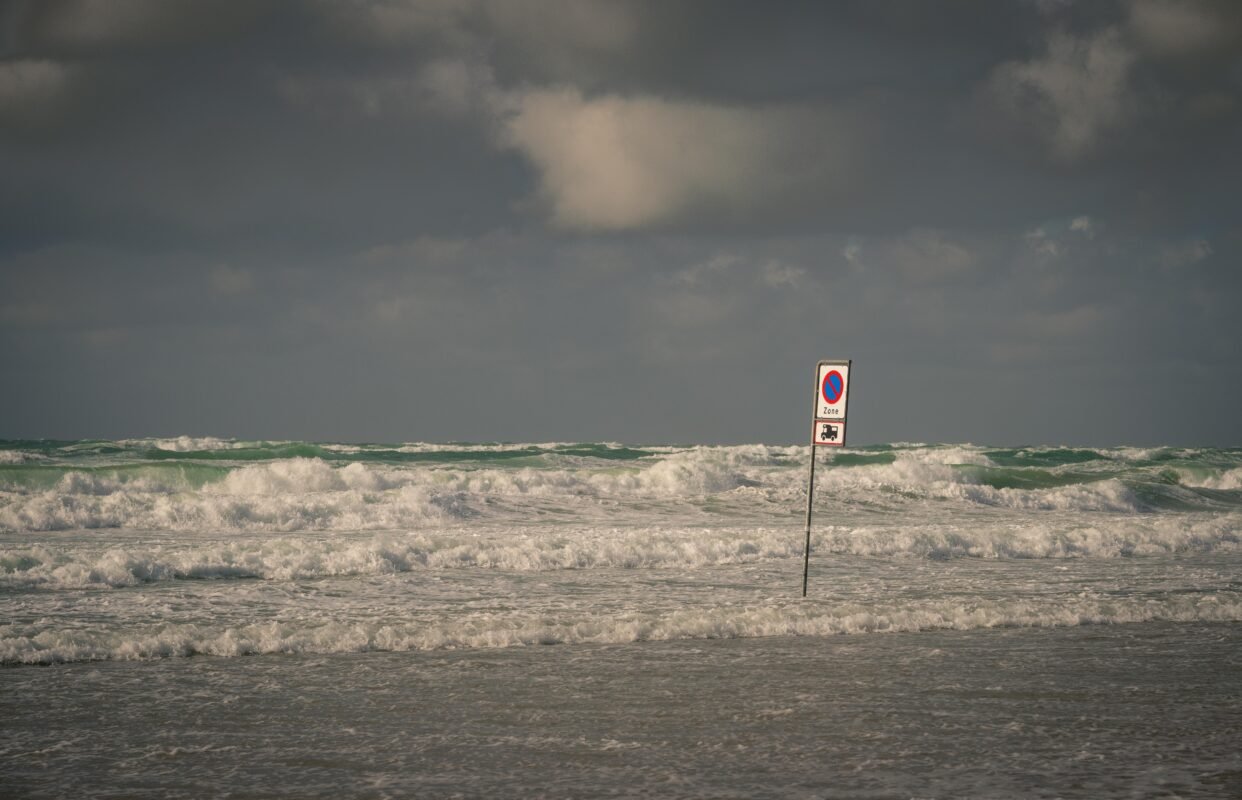
The interplay of sand, sea and sky changes constantly. On windy days, the air is filled with drifting sand, giving your photos a dramatic mood. On clear days with soft light, you can play with the lines of dunes, cloud formations and the lighthouse as a focal point.
The best time of day is usually around sunrise or sunset. In this case, I preferred sunset due to the lighthouse’s position. The dunes turned golden and long shadows stretched across the sand. The shifting light combined with the rugged nature makes this lighthouse a place where every visit produces new images.
Preparation
I have been to Denmark many times, mainly because of my previous work. I always enjoyed it. While Denmark may not be as spectacular as some of the world’s most famous photography destinations, those who look closely will discover wonderful scenes – especially minimalistic ones, or images of the wild sea with crashing waves.
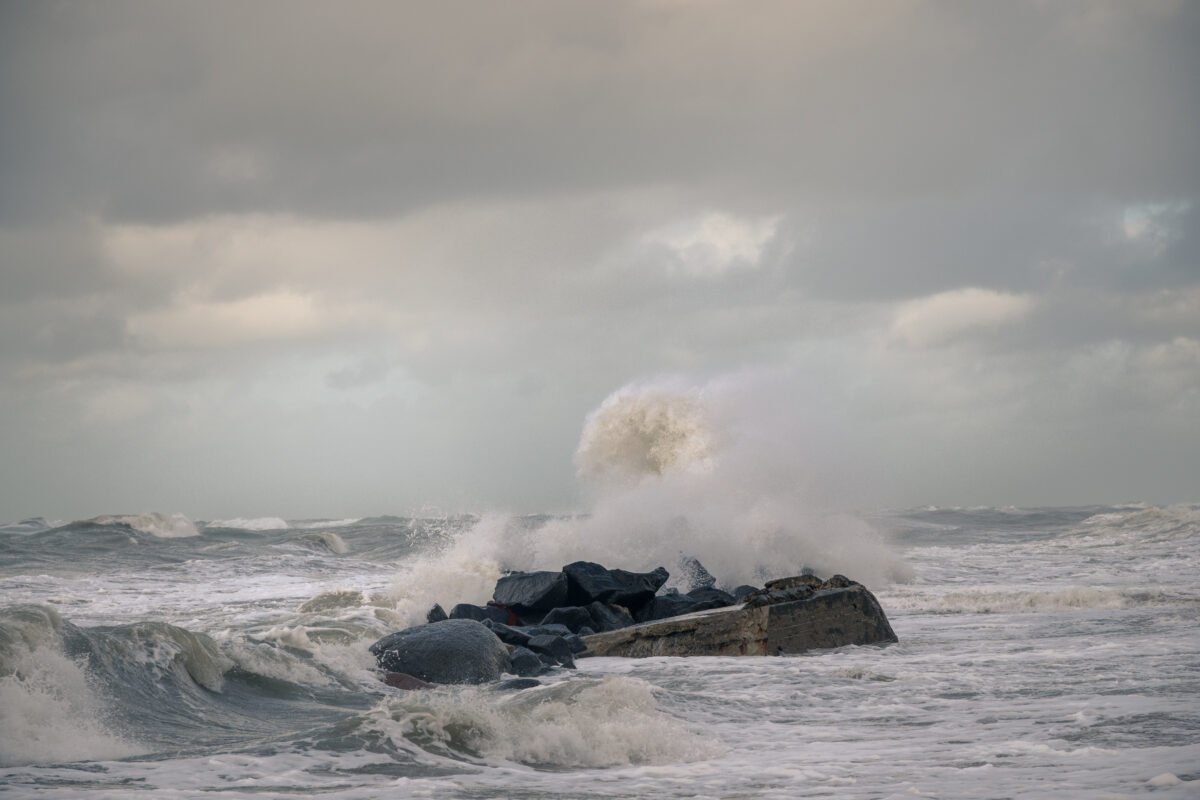
During my stay I always keep a close eye on the weather. I saw several days with strong winds and a partly cloudy sunset in the forecast. To me, a perfect combination. And with such weather, there are usually far fewer visitors – another advantage.
For the lighthouse, I already had the image in mind: blowing sand creating a magical effect, illuminated by the sunset. I just had to wait for the right moment.
The moment of truth
Arriving at the parking lot confirmed my expectations: not a single car, only a few campers. I grabbed my gear and started the walk to the lighthouse. Keep in mind it takes about 30-45 minutes, and walking in sand makes it slower.
The wind was stronger than I had imagined. Sand whipped around me and I could barely see ahead. Tough conditions, but at the same time breathtaking – raw nature at its best.
Sand blew in long streams across the dunes, giving the whole area a surreal look. It was as if the lighthouse was being swallowed by a moving desert, while the sea below relentlessly pounded the cliffs.
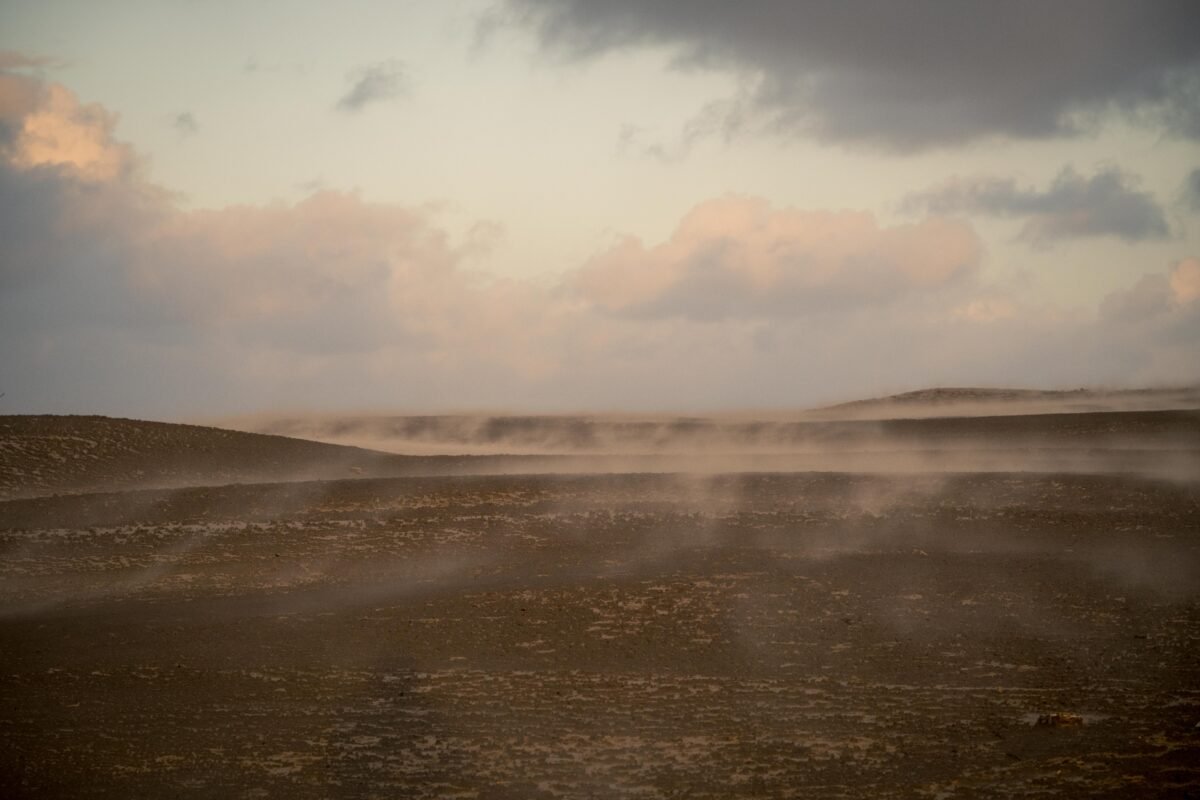
A plan is good, improvisation is better
Plans can change quickly. I had brought my tripod, but it proved useless. The wind was so strong that it was impossible to keep it steady. So: change of plan – shoot handheld with fast shutter speeds to keep the images sharp. I would have loved to experiment with long exposures, but it simply wasn’t possible.
Changing lenses was also out of the question. Luckily I had anticipated that, but still I couldn’t resist taking photos right in the middle of the storm. My Nikon took a beating, but it performed superbly – proof of its quality.
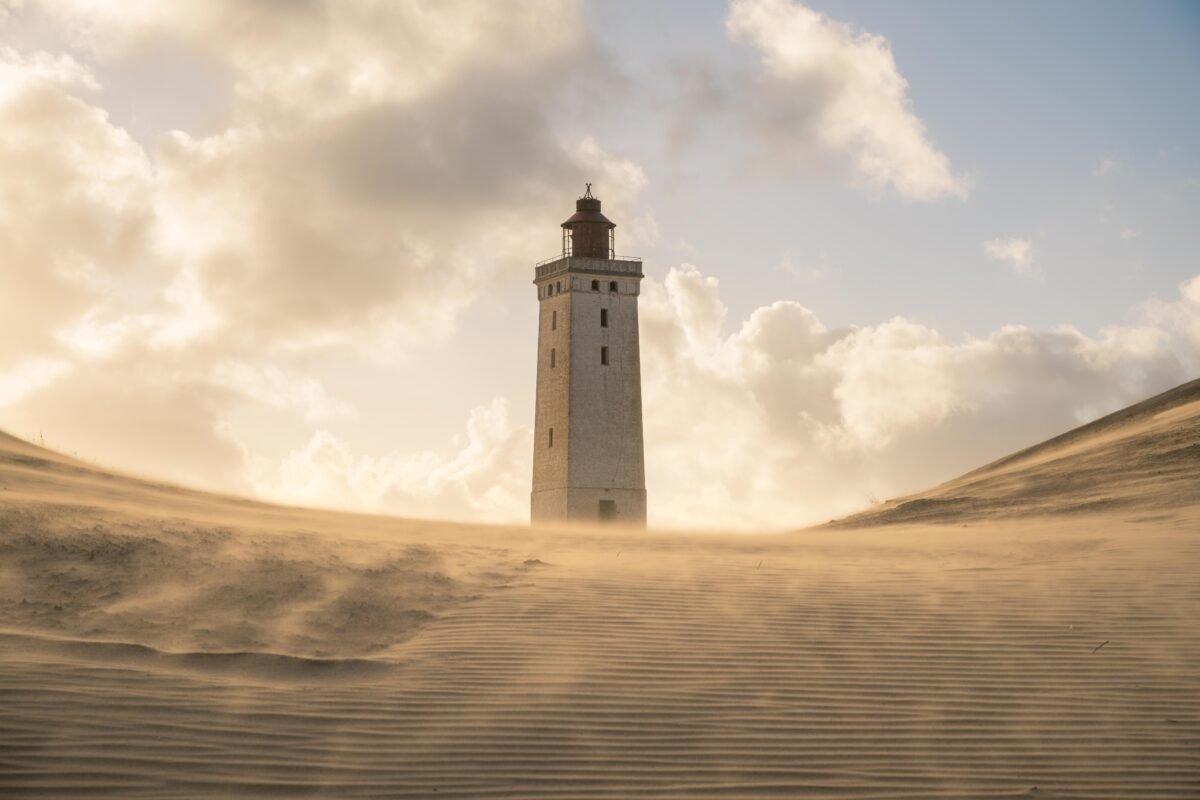
I had envisioned a specific shot of the lighthouse, but the conditions forced me to improvise. Other angles turned out to be far more interesting and demanded to be photographed.
I arrived well before sunset and decided to wait inside the lighthouse. By then I was covered in sand – in my mouth, ears and eyes. A welcome pause!
The most impressive moments were when the sun broke through the clouds. Light fell directly across the dunes and illuminated the tower, making the landscape even more powerful and dramatic. These short, unexpected moments are what make photography at this place so special.
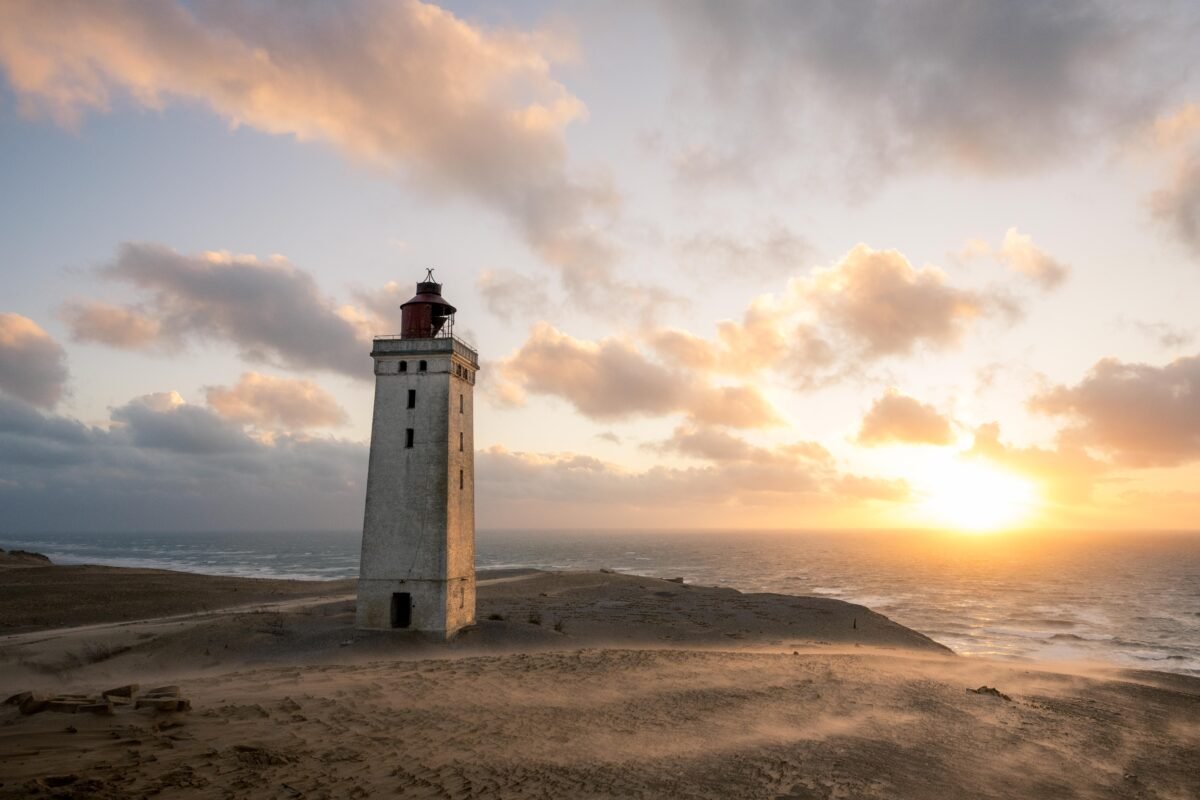
What an incredible experience!
Tips for photographers
Photographing the Rubjerg Knude Lighthouse is unforgettable, but the conditions can be challenging. Based on my own experience, here are some practical tips:
Protect your gear
The wind constantly blows sand across the dunes. Use a rain cover or plastic bag to protect your camera, and bring a brush or blower. In my case, only a lens brush worked – the sand was everywhere.
Choose the right lens
A wide-angle lens is ideal for capturing the vastness of the landscape and lighthouse. For details, a tele or zoom lens works well. But don’t change lenses in the dunes when it’s windy! Pick one beforehand and stick with it.
Be prepared for changing light
Clouds and wind make the light change constantly. Shoot in RAW to have more flexibility later. It’s basic advice, but essential here.
Tripod use
Normally great for low light or long exposures, but in these conditions my tripod was useless – it nearly blew away. Know your gear, improvise, and prioritize shutter speed. I pushed the ISO higher for sharp shots – a little noise is better than blur. My Nikon Z8 handled it like a champ.
Plan your visit
Sunrise and sunset are the best times. Always check the weather forecast for wind and clouds – they can make the conditions even more dramatic.
Broader perspective: Danish coastal landscapes
The Rubjerg Knude Lighthouse may be the most famous symbol of the Danish north coast, but it’s not the only photogenic spot. Along Jutland’s coast you’ll find countless places where sand, sea and wind create a dynamic landscape. From high cliffs to endless beaches – the variety is impressive.
Inland, you’ll discover a different kind of scenery, such as the lakes and forests around Silkeborg. In autumn the forests turn orange and red, while morning mist creates a mysterious mood. Combined with the rugged coast, Denmark is surprisingly diverse for photographers. For true nature lovers, I also recommend the island of Bornholm.
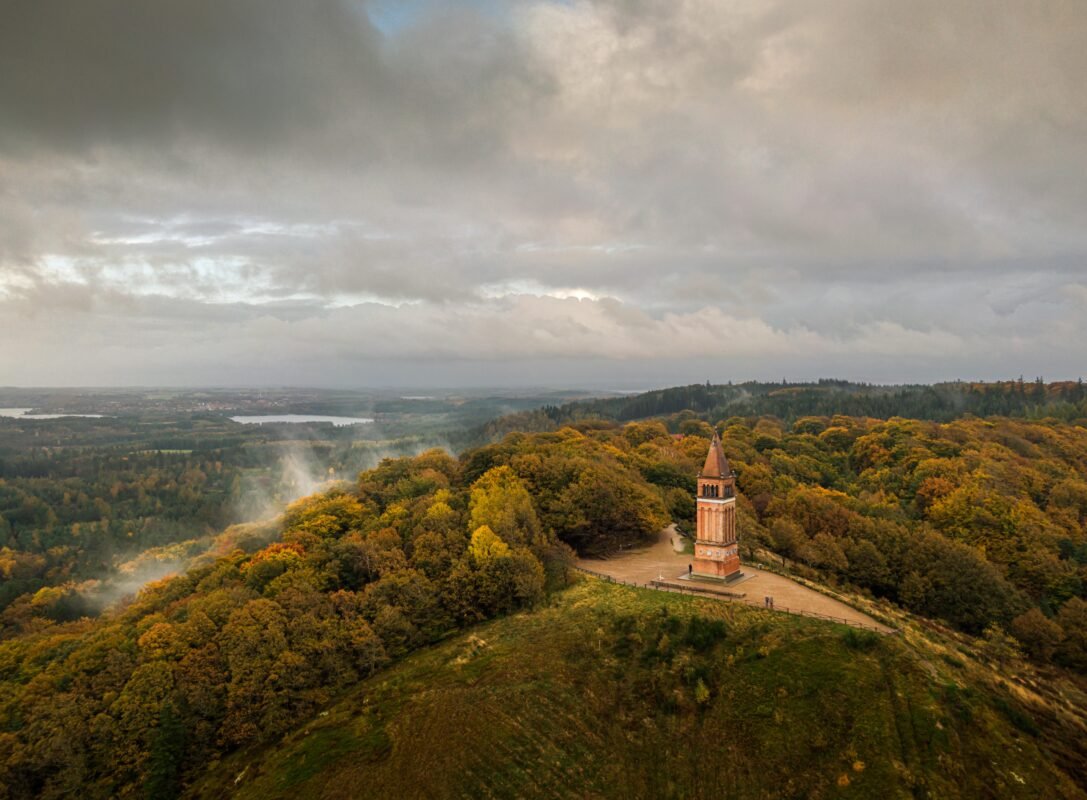
Together these places show that Denmark offers far more than just cities or famous landmarks. It’s a destination where nature plays the lead role – and where photographers can always find new inspiration. Whether at a lighthouse in the dunes or the silence of an autumn forest, Denmark has a unique atmosphere of peace and authenticity.
Experience the magic of Denmark yourself
The force of the wind, the play of sand and sea, and the iconic Rubjerg Knude Lighthouse make the Danish coast an unforgettable place. Rugged, pure and full of energy.
Want to bring this atmosphere into your home? Discover my photo books capturing landscapes like these, explore the fine art prints with coastal, mountain and forest scenes, or check out my Denmark calendar with QR codes showing where the photos were taken. This way you bring not only the magic of Denmark, but the beauty of nature worldwide, right into your living room.
Other info
- VisitDenmark — Most unique lighthouses in Denmark (including Rubjerg Knude) VisitDenmark
- VisitDenmark — Discover Denmark’s most beautiful places (including Rubjerg Knude) VisitDenmark
- VisitingDenmark (Denmark.dk) — official tourism site Denmark.dk
- VisitNordvestkysten — Rubjerg Knude info & history VisitNordvestkysten
- OpdagDanmark — Rubjerg Knude Lighthouse: tips, routes, opening hours OpdagDanmark
- How to Visit Rubjerg Knude Lighthouse (LaidBackTrip) — practical guide & experiences LaidBackTrip
- Travel Guide to Rubjerg Knude Lighthouse (NorthAbroad) — atmosphere & tips NorthAbroad
- National Park Thy – recommended for nature lovers – National Park Thy
- A personal favorite: Danish wildlife photographer Morten Hilmer, based in North Denmark. Also check his YouTube channel: Morten Hilmer on YouTube


